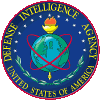
EMPLOYING THE ARMED FORCES
PREVIOUS CONTENTS NEXT
October 1991
Chapter 6
EMPLOYING THE ARMED FORCES
Korean War Experiance
North Korea's experience during the Korean war continues to influence the Army's current organization, tactics,
and military doctrine.
Since the war, North Korea has sought to make its territory impregnable to enemy attack. Pyongyang initiated a
program in the 1960s to place the majority of important arms industries and other military installations
underground to make them virtually invulnerable to allied air attack. North Korea also has strengthened its
reserve forces by reorganizing and acquiring large numbers of artillery and antitank weapons. These enhanced
capabilities to defend the rear area would allow Pyongyang to use all its regular ground force units in offensive
operations against South Korea.
Figure 60. Topography and Military Operations. Past military operations were affected significantly by such obstacles as mountains and rivers. Although many things have changed since the Korean war, Pyongyang still must consider these factors.
Offensive Operations
The basic goal of North Korea's offensive military strategy is to consolidate and control strategic areas of South
Korea and quickly destroy the allied defense before the United States can provide significant military
reinforcement. North Korea has concentrated troops, self-propelled artillery, and logistic supplies in the
forward area between Pyongyang and the Demilitarized Zone. At the onset of hostilities, artillery units would
launch massive preparatory fires at South Korean defensive fortifications and along the major routes of advance.
The Air Force would strike selected ground targets, such as enemy airfields, supply points, and some ground
force units. Although the Air Force does not perform close air support for ground force units in contact with the
enemy, it would strike high-value targets and selected tactical terrain prior to offensive operations. North
Korean infantry and armor elements of the first-echelon divisions of the forward conventional corps would
attempt to penetrate the allied forward defense. The mechanized corps, brigades augmented with attached
self-propelled artillery, and combat support elements would attempt to pass through any openings the frontline
corps create. The mechanized corps quickly would penetrate deep into South Korea, bypassing and possibly
isolating many allied units.
Figure 61. Massive Artillery Fire. The North has a significant capability to support operations with artillery. Range and mobility are key factors that influenced the composition of these forces.
North Korean airborne and sniper units would support the penetration as units from the rear corps reinforce the
forward corps' offensive operations to link with successful North Korean penetration forces. The mechanized
forces would continue toward Seoul and other key military objectives with amphibious vehicles and
river-crossing units to bridge the Imjin River to the northwest of Seoul. North Korean forces would attempt to
turn the flanks and encircle the South's divisions deployed to the north of Seoul. Successfully enveloping Seoul
would destroy the majority of South Korean ground force units and leave the entire country extremely
vulnerable to the remaining North Korean mechanized and armored forces.
The Navy's capabilities to conduct amphibious landings have improved significantly as a result of indigenously
producing various types of support and landing craft. The Army has specially trained amphibious Special
Operations Forces brigades; one probably is on each coast. North Korea may use these forces to secure the
northern islands and strategically important areas, such as the Kimpo Peninsula. In addition, it would want to use
these forces to secure the flanks of frontline corps moving to isolate Seoul.
Figure 62. Possible Special Forces Operation. This large, versatile force will pose a threat that far exceeds the number of troops transported by air and sea. Even small groups behind the front lines could cause serious problems for Allied forces as they mobilize.
During amphibious landings, the Navy would support ground forces by providing shore bombardment and
logistic resupply. North Korea has a limited capability to provide support troops on shore. Therefore, it would
have to curtail naval support to the ground forces soon after landing.
The Navy and the Air Force could act in a strong supporting role in the initial stage of an offensive. The level of
sustained offensive operations would depend on the size and composition of US air and naval force
augmentation. If confronted by strong forces, the North Korean air and naval forces would revert to largely
defensive roles.
PREVIOUS CONTENTS NEXT



